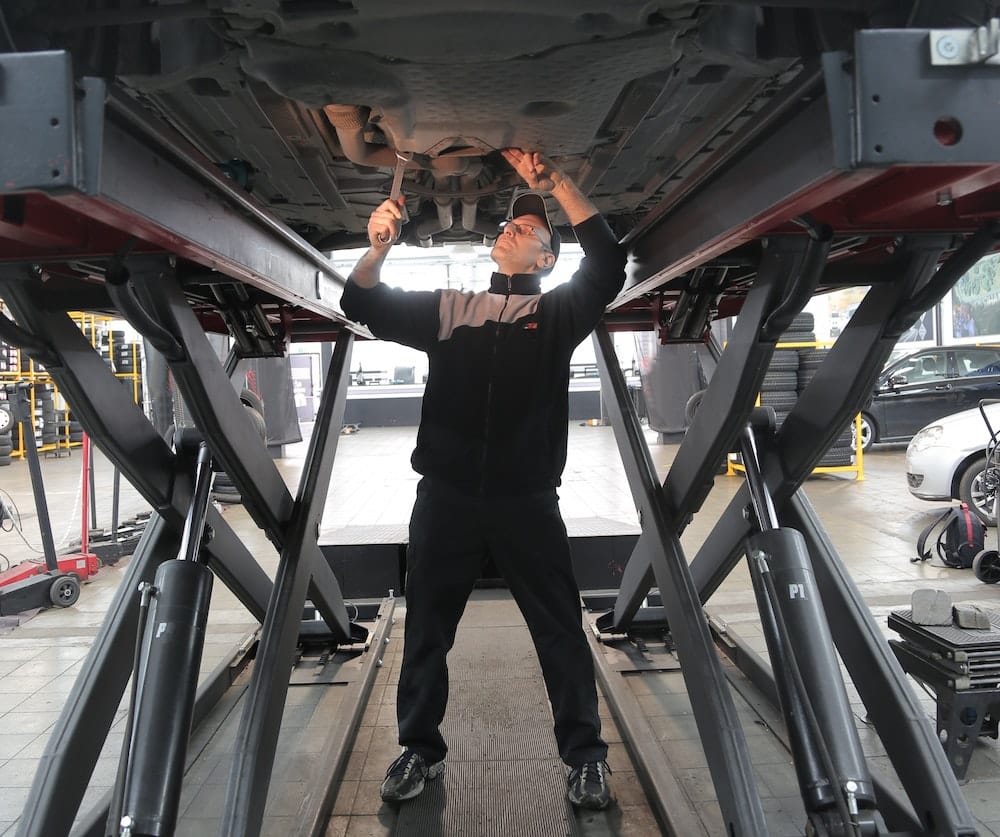Fleet management challenges are endless. From lowering fuel and maintenance costs to managing driver behavior and integrating fleet data, many fleet managers face a new problem every day. In this post, we’ll tackle the issues surrounding fleet fueling, maintenance, and vehicle uptime. Read to the end for tips like how to reduce failed repairs by 41% and more.
This is part one of a three-part series addressing common fleet management challenges head-on. Be sure to read Part Two and Part Three as well, as you won’t want to miss out on the valuable tips and strategies we’ve compiled through countless hours of research and gathering industry experience.
Let’s dive in.

Fluctuating fuel prices can make it difficult to run your business. 2022 proved that when diesel fuel peaked in June at a record $5.75 per gallon. So it goes without saying that reducing high fuel costs is a key way to improve your fleet operations.
Fleets can overcome this challenge by implementing strategies such as driver training, adding route optimization software, fuel-conserving aftermarket parts, and investing in fuel-efficient vehicles.
We go in-depth on this topic in our ‘Top 9 Fuel Savings Strategies‘ article (crammed with actionable advice we can’t fit here), but here’s a preview:
If fuel efficiency continues to be a struggle and range is not a concern, you may want to consider electric vehicles.

There are many pros & cons of electrifying your fleet, but here are the main items you’ll want to consider:
Ultimately, making the switch comes down to practicality, productivity gains, and budget- things your team can only determine through a thorough analysis.

Finding high-quality parts at an affordable price is one of the most common fleet management challenges. This can be especially difficult if the fleet operates a variety of vehicles, as finding parts that are compatible with all types of equipment can be time-consuming and expensive.
To make matters worse, the nation is currently facing a parts shortage from manufacturing halts during the pandemic.
To overcome this challenge, you should consider partnering with reputable suppliers, negotiating volume discounts whenever possible, or investing in a parts inventory management system.
Here are a few parts suppliers you may want to consider:
With most B2B parts suppliers, it’s certainly worth your time to build a relationship with a rep at the company to negotiate better volume discounts. In most cases, they want your business just as badly as you want savings.
At the end of the day, long-term partnerships can have a huge impact on your routine maintenance and repair costs.
Implementing a maintenance program for your fleet vehicles can be a cost-effective way to reduce the frequency and severity of repairs.
However, managers must carefully balance preventive maintenance costs and their benefits to ensure they get the best value for their money.
To do this, they can consider factors such as parts’ useful lifespan, cost, vehicle age and condition, and the cost of repair downtime for their entire fleet, and use this to create a detailed, numbers-based fleet maintenance plan.
Adding a parts inventory management system like Fleetsoft to your fleet maintenance strategy can greatly increase the likelihood your business is making the right decisions when building out a maintenance plan.

Getting your fleet maintenance plan right is essential for maximizing vehicle uptime and productivity. Consider factors such as the vehicle’s age and condition, the parts’ expected lifespan, and the downtime cost when planning maintenance.
To maximize uptime, implement a digital maintenance management system, schedule regular maintenance intervals, and prioritize repairs based on importance.
By using real-time data and advanced analytics on top of your daily vehicle inspections to pinpoint common issues, you can effectively decrease on-the-road safety concerns for your drivers and dramatically reduce unplanned downtime.
Ensuring that vehicles are repaired and maintained by trained technicians is another key factor in maximizing uptime and expedited fleet maintenance. However, training technicians and investing in high-quality tools and equipment can be costly.
Find out how many uses of a tool or training you would need to justify your investment over outsourcing repairs.
Additionally, helping your technicians gain ASE certifications is a great way to increase the quality of work and aid employee retention. As reported by Heavy Duty Trucking, ASE-certified technicians are 19% more productive than non-ASE-certified technicians. ASE-certified techs also have a 41% lower comeback rate, meaning their repairs are less likely to end up back in the shop.
Despite careful planning, unforeseen repairs and breakdowns can still occur. To minimize the impact of such events on vehicle uptime, develop contingency plans, such as having spare parts on hand, a trusted roadside service, or establishing relationships with backup service providers to ensure operations continue without a hitch.
Regarding breakdowns, the best thing you can do for your fleet is to have a detailed walkthrough that your drivers can keep in the vehicle.
This can include steps such as:
This could mean your driver has to keep a massive paper booklet on hand, but it will likely save your operation from major headaches.

Fleet management has many challenges. Particularly, managers will face issues such as:
Fleet managers can find cost-effective maintenance solutions for their vehicles by partnering with reputable suppliers, negotiating volume discounts, investing in a parts inventory management system, and balancing the costs and benefits of preventive maintenance.
To reduce fuel usage, fleets can add fleet management software such as driver training programs and route optimizers, invest in fuel-efficient vehicles, and implement fuel management systems.
Psssst… Want to see how our fleet management solutions can help you improve fleet vehicle uptime, mitigate costly emergency repairs, monitor maintenance history, improve efficiency, and more?
Grab a free demo.
Do it.
Do it now.
Right down here. ⬇️

Fleet Management Challenges Part Two > — Fleet Management Challenges Part Three >>
Recent Posts
Categories
Stay in Touch
Ready to make fleet management more manageable?